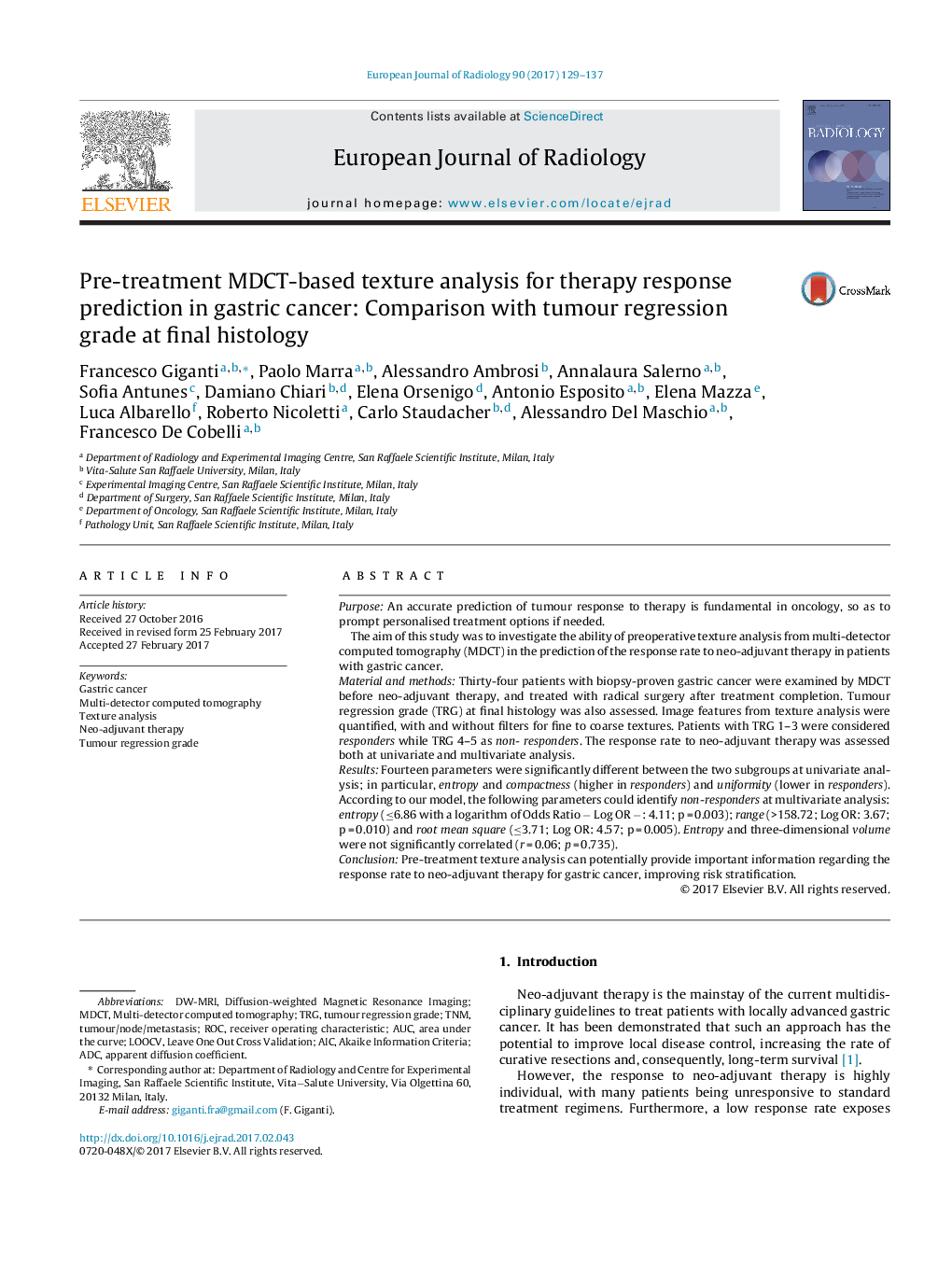| کد مقاله | کد نشریه | سال انتشار | مقاله انگلیسی | نسخه تمام متن |
|---|---|---|---|---|
| 5726322 | 1609730 | 2017 | 9 صفحه PDF | دانلود رایگان |

- Texture analysis from MDCT can predict treatment response in gastric cancer.
- Texture analysis can improve the clinical workup of gastric cancer.
- Further studies are necessary before the application in clinical practice.
PurposeAn accurate prediction of tumour response to therapy is fundamental in oncology, so as to prompt personalised treatment options if needed.The aim of this study was to investigate the ability of preoperative texture analysis from multi-detector computed tomography (MDCT) in the prediction of the response rate to neo-adjuvant therapy in patients with gastric cancer.Material and methodsThirty-four patients with biopsy-proven gastric cancer were examined by MDCT before neo-adjuvant therapy, and treated with radical surgery after treatment completion. Tumour regression grade (TRG) at final histology was also assessed. Image features from texture analysis were quantified, with and without filters for fine to coarse textures. Patients with TRG 1-3 were considered responders while TRG 4-5 as non- responders. The response rate to neo-adjuvant therapy was assessed both at univariate and multivariate analysis.ResultsFourteen parameters were significantly different between the two subgroups at univariate analysis; in particular, entropy and compactness (higher in responders) and uniformity (lower in responders). According to our model, the following parameters could identify non-responders at multivariate analysis: entropy (â¤6.86 with a logarithm of Odds Ratio â Log OR â: 4.11; p = 0.003); range (>158.72; Log OR: 3.67; p = 0.010) and root mean square (â¤3.71; Log OR: 4.57; p = 0.005). Entropy and three-dimensional volume were not significantly correlated (r = 0.06; p = 0.735).ConclusionPre-treatment texture analysis can potentially provide important information regarding the response rate to neo-adjuvant therapy for gastric cancer, improving risk stratification.
Journal: European Journal of Radiology - Volume 90, May 2017, Pages 129-137